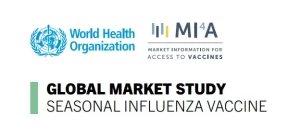Data reveals a surge in heat-related illnesses in the United States this summer
- WHO Releases Global Influenza Vaccine Market Study in 2024
- HIV Infections Linked to Unlicensed Spa’s Vampire Facial Treatments
- A Single US$2.15-Million Injection to Block 90% of Cancer Cell Formation
- WIV: Prevention of New Disease X and Investigation of the Origin of COVID-19
- Why Botulinum Toxin Reigns as One of the Deadliest Poisons?
- FDA Approves Pfizer’s One-Time Gene Therapy for Hemophilia B: $3.5 Million per Dose
Data reveals a surge in heat-related illnesses in the United States this summer
- Red Yeast Rice Scare Grips Japan: Over 114 Hospitalized and 5 Deaths
- Long COVID Brain Fog: Blood-Brain Barrier Damage and Persistent Inflammation
- FDA has mandated a top-level black box warning for all marketed CAR-T therapies
- Can people with high blood pressure eat peanuts?
- What is the difference between dopamine and dobutamine?
- How long can the patient live after heart stent surgery?
Data reveals a surge in heat-related illnesses in the United States this summer
Tracking tools show that record-breaking heat is leading to an increase in emergency room visits in the United States.
A recent study indicates that July was the hottest month on record globally, with a heatwave in North America that would have been “virtually impossible” without climate change.
According to a new federal dashboard, this resulted in a 12% increase in emergency medical service responses for heat-related illnesses between July 13 and August 11.
However, national figures only tell part of the story.

Zooming in on the data, health risks are sharply rising in the most affected areas.
This week, the situation is particularly dire in the Northwestern Pacific region.
As of this Monday (latest available data), emergency room visits related to heat-associated diseases are 16 times higher than they were a week ago.
According to another data portal by the Centers for Disease Control and Prevention (CDC), there were a total of 665 cases of heat-related illnesses this week, compared to 41 cases on the same day last week and 103 cases during the same period last year.
The portal provides a regional breakdown of heat-related cases per 100,000 emergency room visits.
On August 14, Monday, the daily high temperatures in parts of Washington and Oregon states broke records.
With some areas seeing triple-digit temperatures, officials advised residents to seek refuge in cooling centers or other air-conditioned places.
This week, the Northwestern Pacific coastal region, known for its cool and humid climate, has seen temperatures 23 degrees higher than the average.
For communities not accustomed to high temperatures, the heat is particularly perilous. They are facing hotter summers due to climate change.
“Heat is the deadliest of all extreme weather, and as global warming continues, heat exposure situations are intensifying. However, existing data on heat-related deaths does not tell us exactly where people are getting sick,” said John Balbus, Acting Director of the Office of Climate Change and Health Equity at the Department of Health and Human Services and the National Highway Traffic Safety Administration, in a press release last week when they launched the new tracking tool. “This new dashboard allows us to see where the needs are greatest, plan for the future, and save lives.”
This online dashboard aims to assist public health officials in improving outreach and access to medical services in communities that need them the most.
It will be updated every Monday and will display data collected from Emergency Medical Services (EMS) responses to 911 calls.
Meanwhile, the old version of the Centers for Disease Control and Prevention’s online tool displays a temperature map of the continental United States, along with the number of emergency room visits related to high temperatures in each region:
https://ephtracking.cdc.gov/Applications/heatTracker/
The tool also features a search bar allowing users to input specific zip codes or counties.
These city maps display the level of heat in various communities.
In 2021, the Northwestern Pacific region experienced a severe heatwave, resulting in 1038 emergency room visits due to high temperatures in a single day.
Many households at the time lacked air conditioning to cope with North America’s most extreme summer heat.
However, the increasingly frequent heatwaves are exacerbating the situation, and high temperatures are expected to persist in the Northwestern Pacific region and the northern Rockies until this Thursday.
Data reveals a surge in heat-related illnesses in the United States this summer
(source:internet, reference only)
Disclaimer of medicaltrend.org
Important Note: The information provided is for informational purposes only and should not be considered as medical advice.



